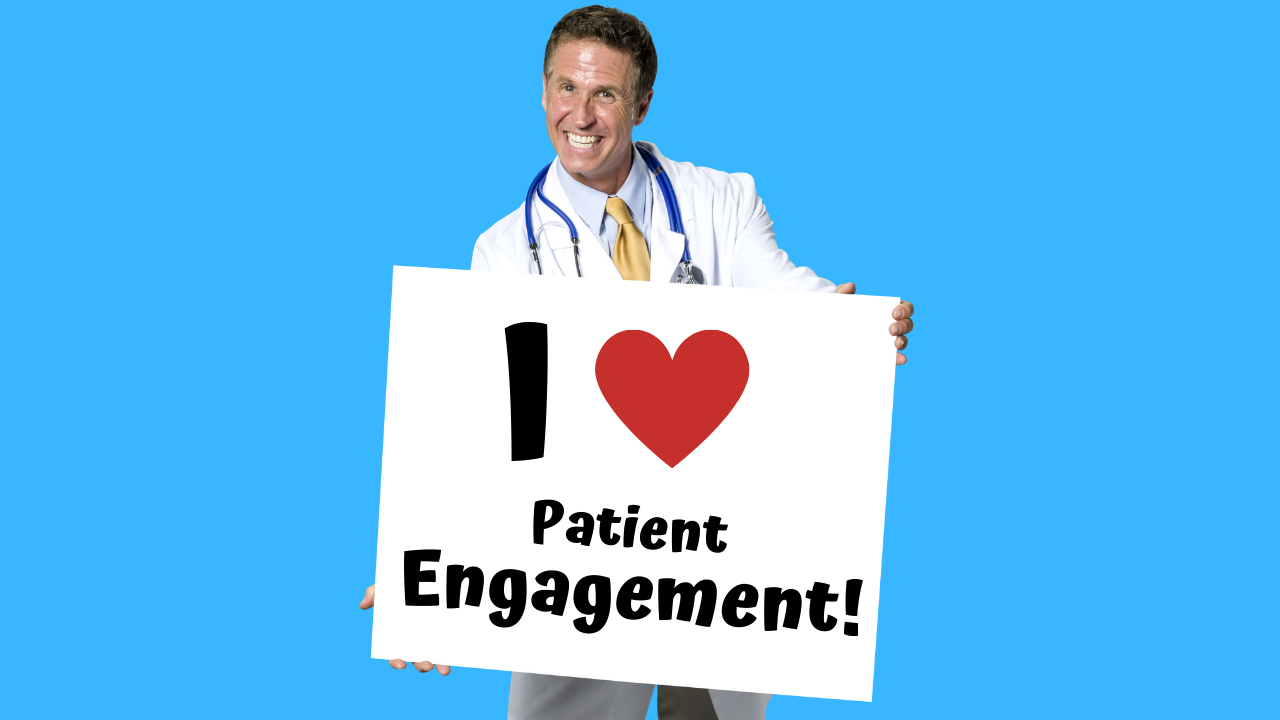HEALTHCARE COMMUNICATION | 10 MIN READ
“Patient Engagement” is Not Just a Catchphrase


I’m worried about two very important words losing their meaning due to rampant overuse in the healthcare industry. My concern is that by reducing an issue so vitally important to improving healthcare into an industry buzzword, its true meaning and purpose has become diminished.
I’m talking about patient engagement.
It’s now a term used so often in today’s healthcare environment that it’s become bastardized. It’s no longer an initiative to improve the quality of patients’ lives. It’s become a marketing slogan that gets keyword stuffed into every piece of technology or healthcare initiative under the sun. I’m beginning to wonder if some providers know what patient engagement is anymore.
You may have your own definition for patient engagement. Here’s what it means to me:
Patient engagement — is a treatment and two-way communication philosophy intensely focused on the patient’s perspective.
Put yourself in the patient’s shoes and listen to them
Even when I’ve seen some providers present their patient engagement initiatives, I often come away feeling that it was more about them reaching some system-defined measurement. It was about how they will push information to the patient, or how they will capture the patient’s attention as if it were a marketing campaign.
Those providers risk falling into the trap of focusing on care philospophies that are less human-centered or people-focused (like number of messages sent to patients), while “patient engagement” remains nothing more than a pair of words.
Believe me: patients know when they’re engaged
2. The staff walked my wife and I through every step of the process, including helping us with a payment plan.
3. We were able to complete the forms online.
4. I received calls and texts reminding me of the pre-operation instructions while allowing me to ask questions or voice concerns.
5. When I arrived for my surgery there were no forms to fill out and no last minute changes or charges. The admissions person said “We have everything we need, Mr. Daniels. All you have to do is relax.”
6. Even at discharge, there wasn’t a pile of papers to read, instructions to memorize, forms to sign, or payments to make. The nurses and staff all said the same thing, “Mr. Daniels all you need to do is rest and heal.”
7. There were follow up calls/text messages, a few emails and a lot of follow up visits. However, there were no surprises.
The consumer litmus test applies to healthcare
It’s not impossible to find that today, but it’s extremely rare because it now requires continuous care of the consumer. This includes reinforcing the decisions consumers have made in buying their product. You have to do that through communication channels that are meaningful to the consumer.
Consumers have specific criteria that must be met before they give their trust and loyalty to a product, service, or brand. That now extends to the healthcare industry, and it’s why you continually hear about its “consumerization.”
Just like car dealers and buyers, healthcare providers can’t continue to assume they’ll always have the patient’s trust and loyalty. A successful patient-engaged practice can be described as one that effectively competes in a consumer-driven healthcare environment by meeting or exceeding expectations.
These days, it’s not just about the cheapest place to have your ACL repaired. It’s also about:
- What other people say about the practice
- Expectations for healing
- Their success rates
- What people say about their bedside manner
- Communication about appointments, costs and insurance
- Empathy about medical and surgical fears
Engagement doesn’t begin and end at the hospital or doctor’s office
At my company, we build patient engagement into our medical patient communication solution so doctors and hospitals can spend more time providing quality care. We’ve got your back, Doc!
I’m here because I care to be part of a solution that is a significant part of that transformative approach to care. I want to focus on the humanization and personalization of patient interaction through various channels. I’m here because communication and quality are respected in every step of the patient and provider journey.
For example, we’ll work with our clients on website or statement designs that lead to the best results. These designs communicate with patients in ways that showcase the provider’s personality or care philosophy. We’re not paid for this, but we are compelled to share the lessons we learn to increase our clients’ success with their patients.
Patient engagement is a process and philosophy, but it’s not rocket science. The patient has already done their part – they’re in front of you. Now it’s a matter of showing them that they’re not just a number. Prove that your level of interest isn’t limited to the check-in/payment/checkout process. Treat them like consumers and patients, not wallets and credit card holders. Believe me; they’ll notice and remember your level of care.
At that moment, you would’ve truly defined patient engagement. It feels good, and it makes a significant difference in the lives of patients and the success of business. Trust me; I’ve experienced both.
Is Patient Engagement More Than Just a Buzzword to You?
Whether you’re looking to improve one area of patient communication or the whole enchilada, we can help!
Resources
More Articles Related to Patient Communication
Overcoming Call Blocking and Labeling Challenges in Debt Collection
Reaching right party contacts is hard enough. But when carriers block your calls from getting through to the consumer, or slap the dreaded “Spam Likely” onto your Caller ID, it makes a difficult job nearly impossible. But there’s a solution.
Building a Self-Service Portal that Consumers Want to Use
Creating specific, measurable, achievable, relevant, and time-bound goals are the best way to enhance agent performance, drive customer satisfaction, and ensure agent activities are aligned with your organization’s overall objectives.
What to Know If Your Call Center is Storing Unredacted Call Recordings
Creating specific, measurable, achievable, relevant, and time-bound goals are the best way to enhance agent performance, drive customer satisfaction, and ensure agent activities are aligned with your organization’s overall objectives.



